Descriptive & Prescriptive Analytics on Logistics Performance
Project Introduction
In this project, my team and I chose six countries from the Middle East & North Africa (MENA) region: Burkina Faso, UAE, Egypt, Senegal, Yemen, and Sudan to focus on. We separated the six into best-performing and worst-performing and further analyzed what caused certain countries to perform worse than others.
Our main goal for this project is to use the Logistic Performance Index and perform the following two aspects of data analysis:
Descriptive: What is happening in MENA and the six countries?
Prescriptive: Now that I know what is happening, what should I do?
Through the given LPI data and other KPIs that we found online, we were able to deep dive into the stories behind the changes in rankings throughout the years, and ultimately give suggestions on whether to invest in a country/region or not.
Excel is the main tool used in this project. Skills demonstrated in this project are data exploration, data visualization, regression analysis, hypothesis testing.
Data Description
The data we had in hand was five years of Logistic Performance Index (LPI) data from 2007 to 2018, and the Index is measured in six categories: Customs, Infrastructure, International Shipments, Logistics Quality, and Competence, Tracking and Tracing, Timeliness. LPI is a benchmarking tool published by the World Bank to help countries identify the challenges and opportunities they face in their trade logistics performance.
Our Analysis
First off, let's take a look at the overview of LPI rankings among the six countries.
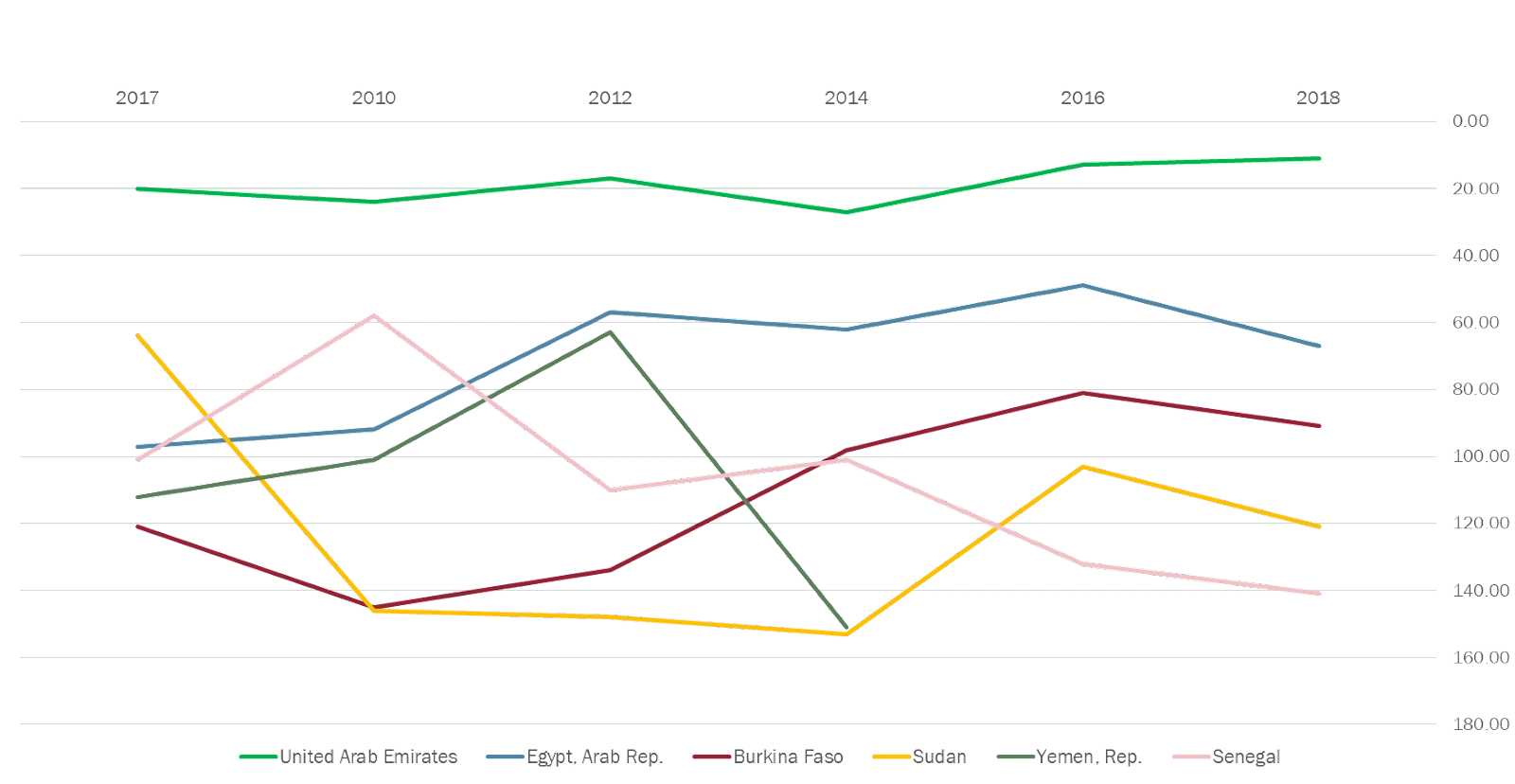
Yemen and Egypt were rising together in ranking until 2012, and Yemen had a huge drop from 2012 to 2014. There’s also no data beyond 2014. On the other hand, UAE, Egypt, and Burkina Faso are the countries that are doing better in the LPI rankings. There wasn’t much change in ranking for UAE throughout the year. Egypt and Burkina Faso both had been rising in a slightly similar pattern since 2010.
Based on this overview, we define best-performing countries as UAE, Egypt, Burkina Faso, and worst-performing countries as Yemen, Senegal, Sudan.
Let's dive a little deeper into the six categories of LPI
Out of the six factors that LPI score based on, International Shipment scores and Infrastructure Scores have directly impacted the LPI ranking of the MENA’s best and worst-performing countries. As we see in the charts below, UAE, Egypt, and Burkina Faso generally have higher scores in these two categories, which reflect in their overall LPI ranking.
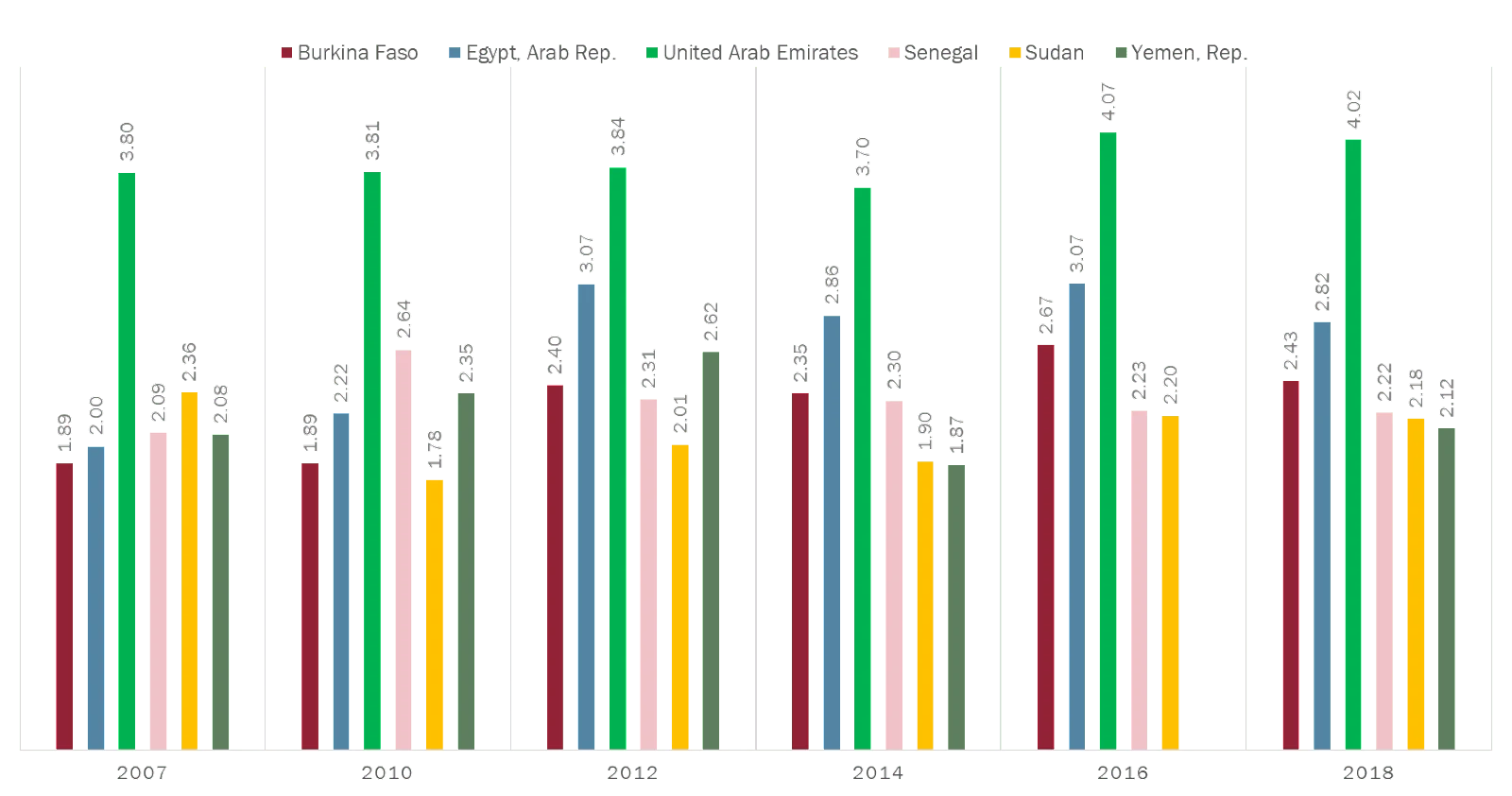
International Shipment Scores
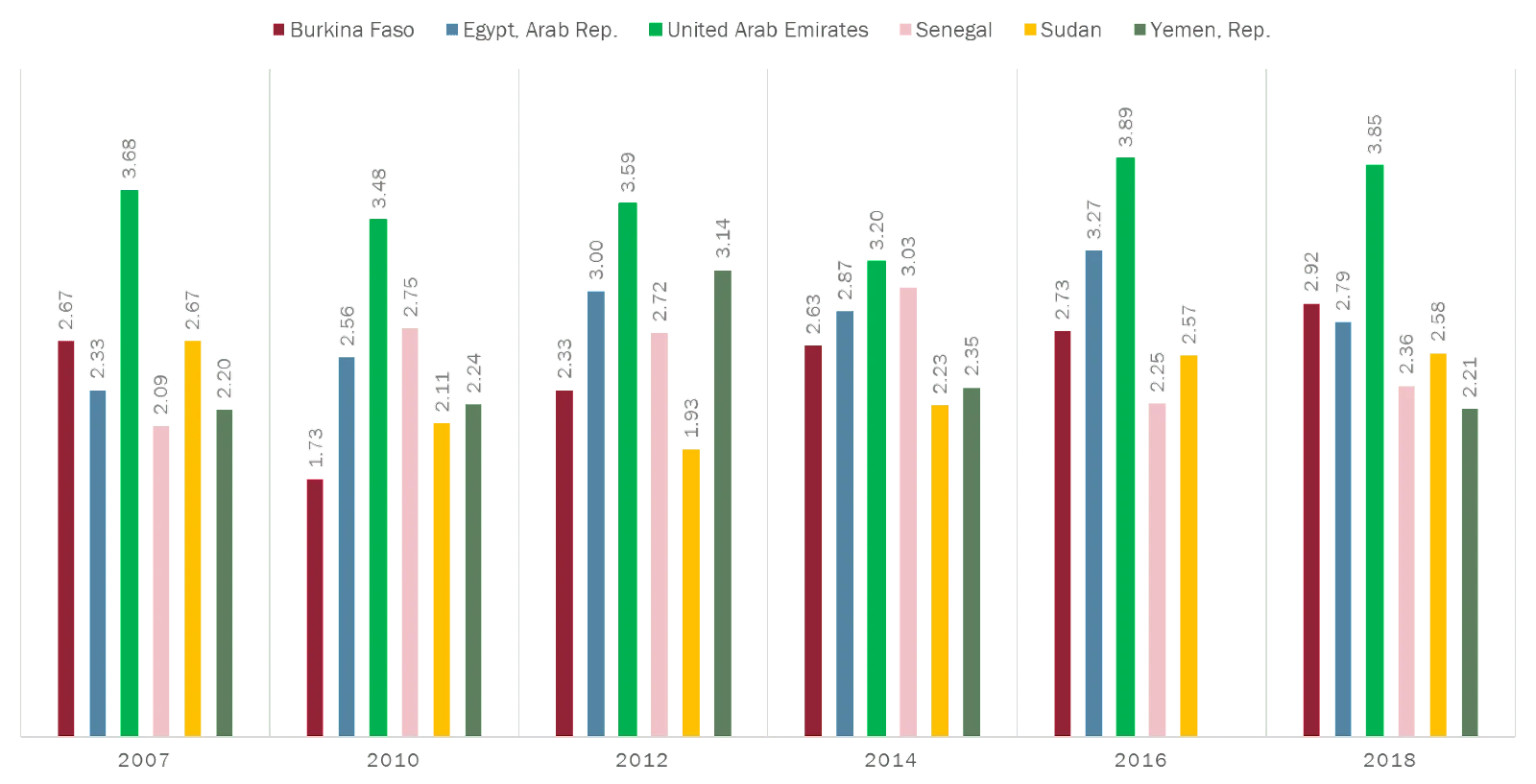
Infrastructure Scores
What did we learn from the descriptive analysis?
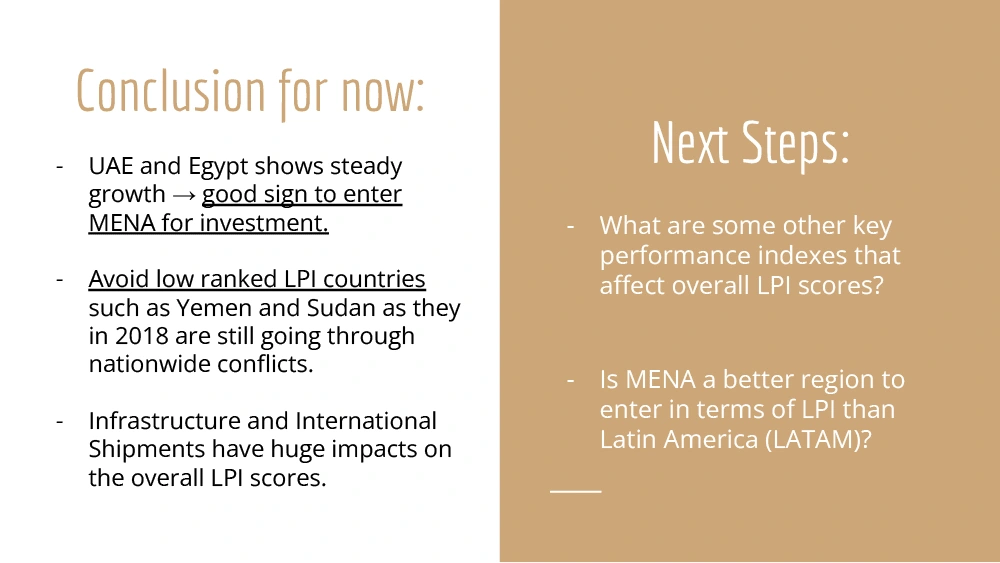
Other KPIs that affect the LPI scores
We are trying to identify the variables that are highly correlated with LPI scores. The heatmap below shows that apart from Trade Growth all other metrics have a high correlation with LPI. Also, we are trying to identify the multicollinearity between independent variables and remove them before we feed into the regression model to achieve a better R square value with limited variables.
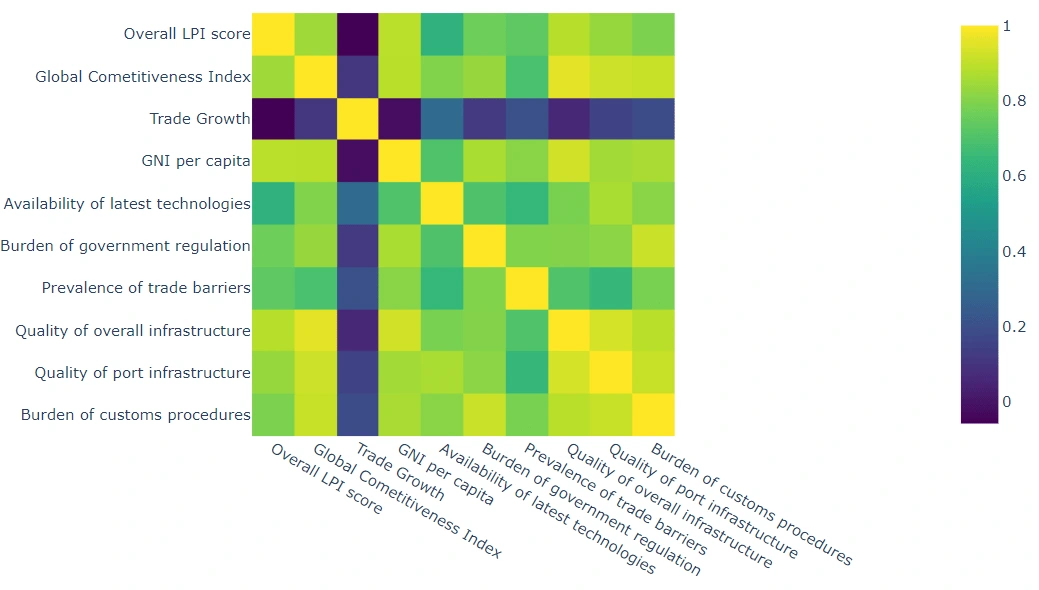
Trade Growth is the only KPI that has no correlation with Overall LPI Score
So how exactly are LPI scores affected by these KPIs?
The regression analysis below shows the various KPIs that have an impact on the overall LPI scores. By looking at the p-Value (<0.05), we can see that Availability of latest technologies, Prevalence of trade barriers, and Quality of overall infrastructure are statistically significant factors in affecting the overall LPI scores.
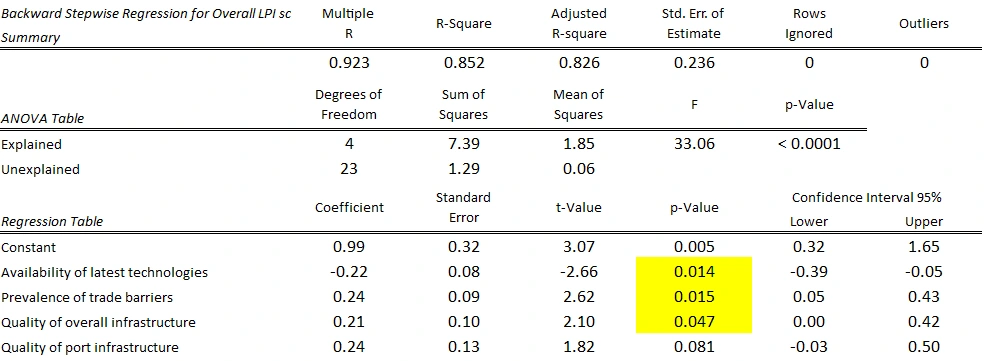
Regression analysis on the overall LPI scores
As for Customs, Burden of customers procedures is the main factor that affects the score.
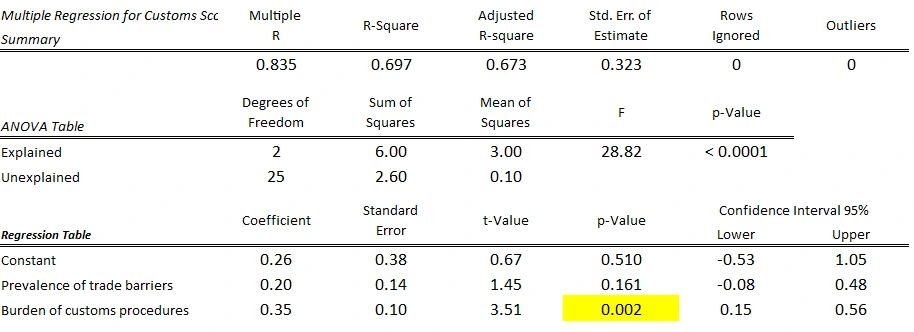
Regression analysis on Customs score
Lastly, Quality of overall infrastructure is the KPI that has the most impact on the Infrastructure score.
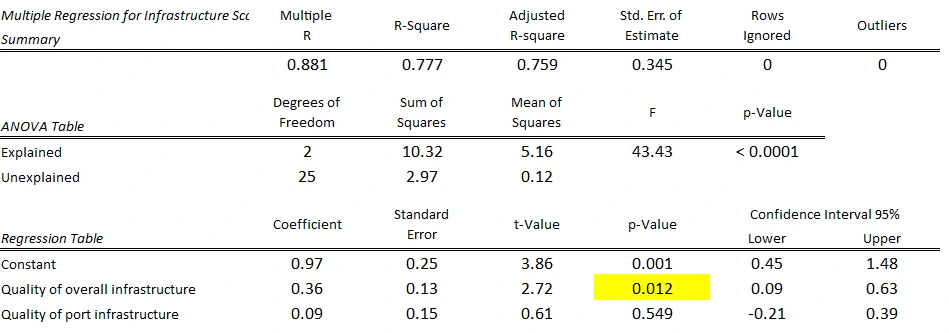
Regression analysis on Infrastructure score
Using hypothesis testing to decide which region to enter for investment
We want to prove that MENA is a better region to invest in compared to the Latin America region (LATAM) based on the average LPI scores over time.
Our alternate hypothesis is: Total MENA LPI scores > Total LATAM LPI scores
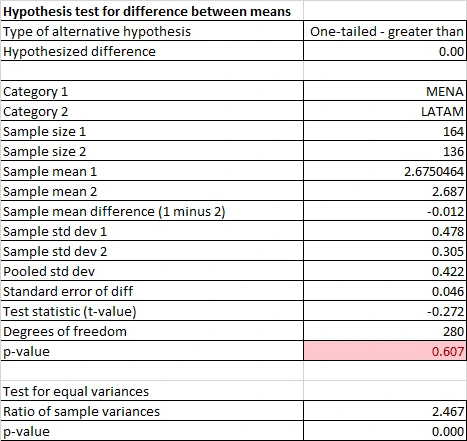
However, the test for hypothesis 1 couldn’t give us strong enough evidence to reject the null, and the result shows that LATAM is actually a better region to invest in than MENA.
For our second hypothesis, we limit the comparison to the top 3 countries for respective regions (MENA: UAE, Israel & Qatar / LATAM: Chile, Panama & Mexico).
Alternate hypothesis: MENA top 3 > LATAM top 3

The hypothesis test indicates enough evidence for us to reject the null.
Conclusions
MENA is a fast-developing region with many countries showing improvements in not only the scores the LPI depend on, but also other trade health factors such as availability of technologies, GNI per capita etc.
Our regression analysis shows that MENA should work on changing their custom procedures, increasing the availability of the latest technologies, and improving overall infrastructure in order to rise as a region in LPI rankings.
Our hypothesis shows that even though MENA as a whole region might not be better than LATAM countries, the top 3 countries in MENA are way ahead of their LATAM counterparts. It would be a good strategy to invest in such countries based on ease of logistics and overall scores.
Appendix
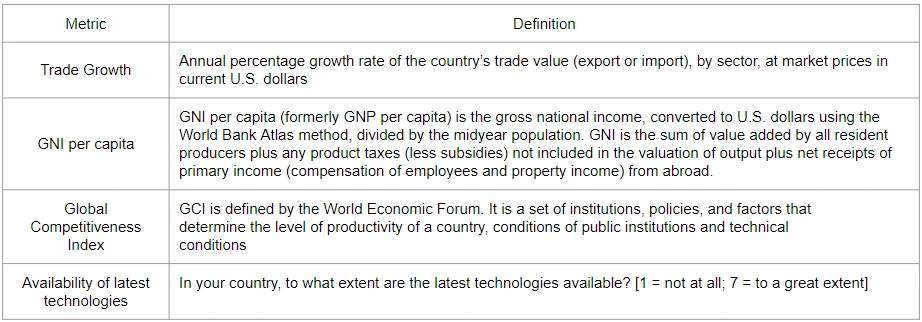

Like this project
Posted Dec 15, 2021
Likes
0
Views
73






